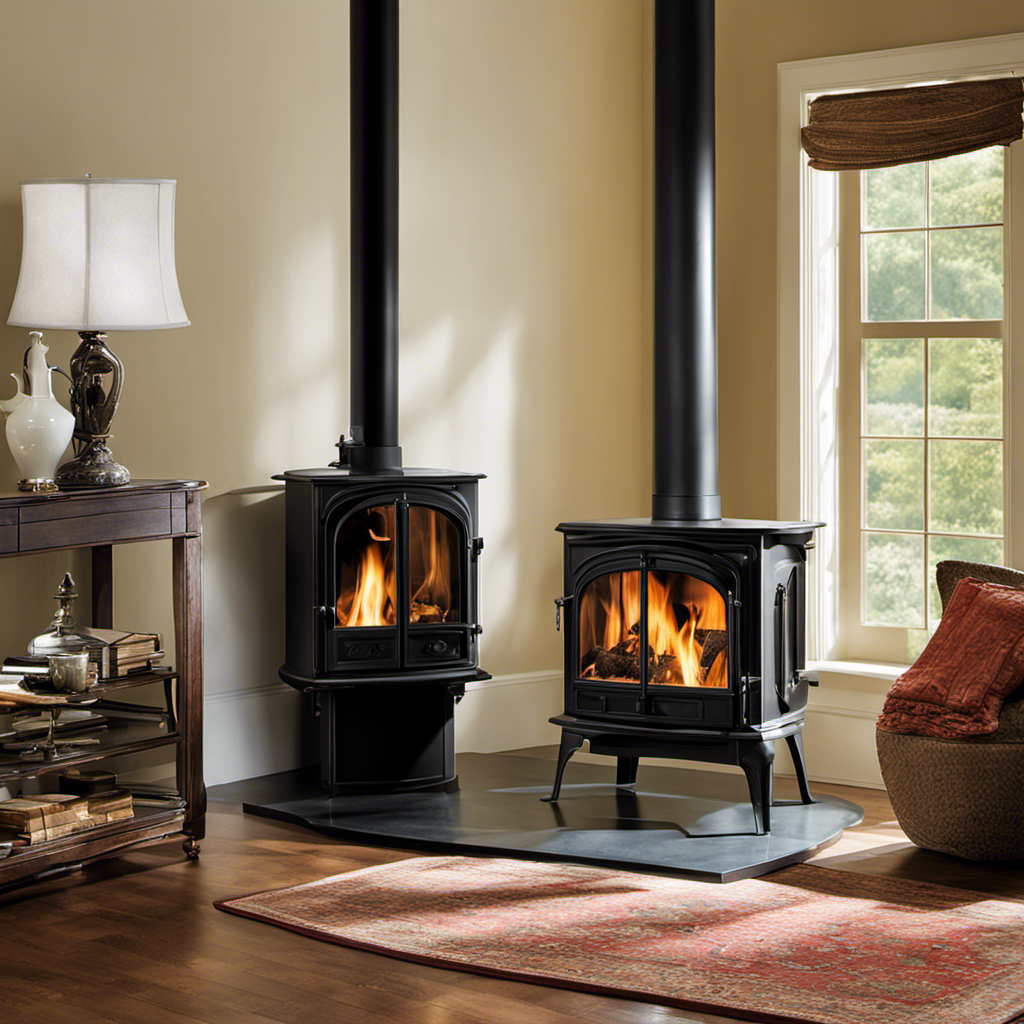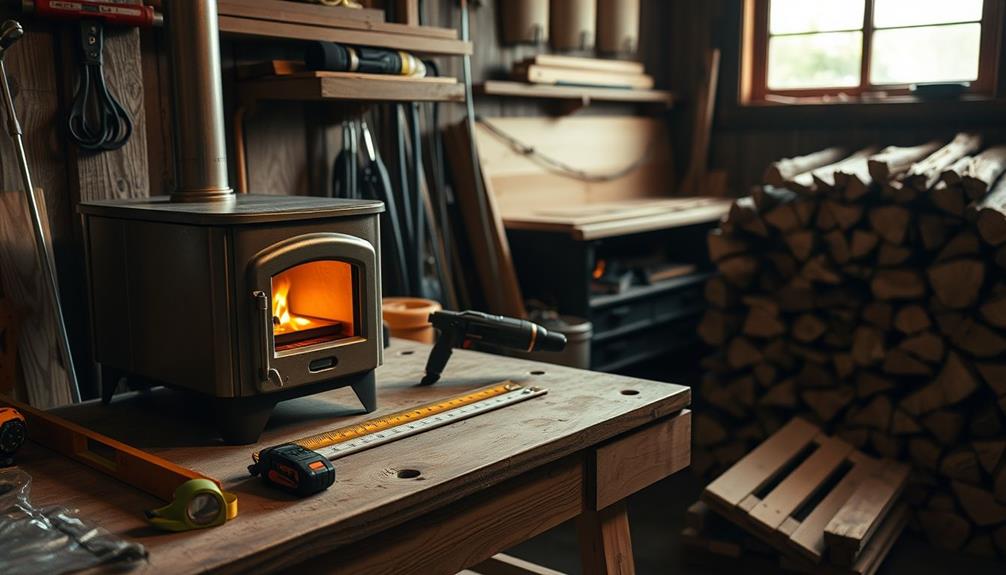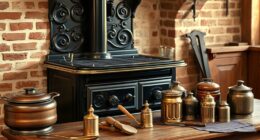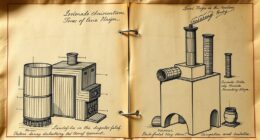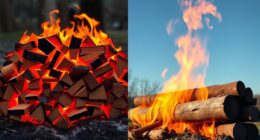As someone who is well-versed in using wood stoves, I’ve learned that sometimes, even the most reliable components need to be replaced. Therefore, it’s critical to know when it’s the appropriate time to replace your wood stove pipe.
In this article, I’ll share my knowledge and experience on the telltale signs of corrosion, excessive smoke or fumes, damaged or deteriorating pipe sections, poor draft, and safety hazards.
Stay safe and ensure your wood stove’s efficiency by knowing when it’s time for a new pipe.
Key Takeaways
- Regular inspection and prompt removal of rust or corrosion to ensure the longevity of the wood stove pipe.
- Checking and addressing excessive smoke or fumes promptly to prevent potential hazards and ensure proper functioning of the wood stove pipe.
- Regular cleaning, maintenance, and immediate replacement of damaged or deteriorating pipe sections to avoid leaks, collapse, and chimney fires.
- Ensuring proper installation, regular cleaning, and maintenance to prevent poor draft or difficulty starting fires, ensuring safety and efficient operation of the wood stove pipe.
Signs of Corrosion
I’ve noticed some signs of corrosion on my wood stove pipe recently. As someone who’s been using a wood stove for many years, I’m familiar with the importance of regular maintenance to ensure its optimal performance. Corrosion, especially in the form of rust formation, is a common issue that can affect the lifespan of a wood stove pipe. To prevent further damage and potential hazards, it’s essential to address this issue promptly.
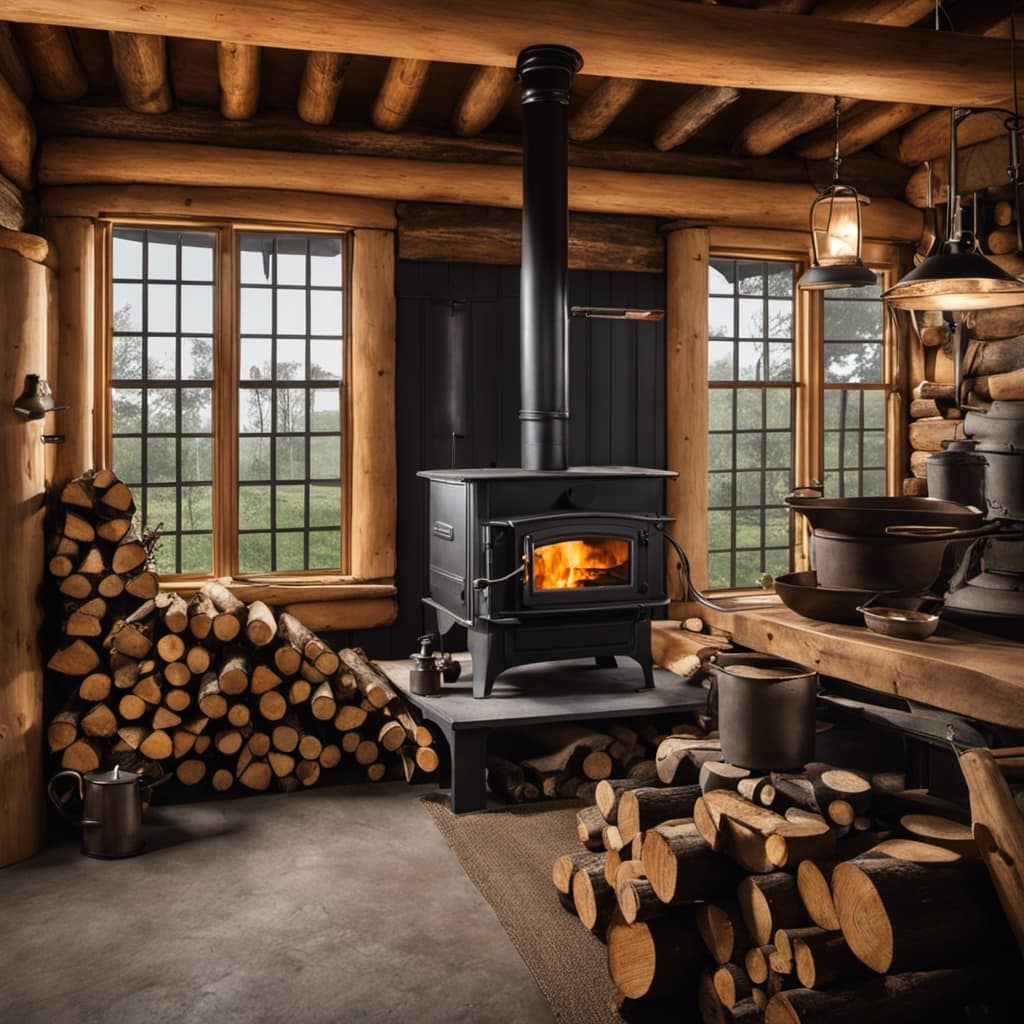
One of the maintenance tips I can offer is to regularly inspect the pipe for any signs of rust or corrosion. If you notice any, it’s crucial to remove the rust and apply a high-temperature paint or rust inhibitor to protect the pipe from further deterioration.
Excessive Smoke or Fumes
Sometimes, excessive smoke or fumes can indicate a problem with the ventilation system of your wood stove. If you notice an unusual amount of smoke or strong odors coming from your wood stove, it’s important to address the issue promptly.
To troubleshoot this problem, start by checking the damper to ensure it’s fully open. A partially closed damper can restrict airflow and cause smoke to back up into your home.
Additionally, make sure the stove is properly cleaned and maintained according to the manufacturer’s guidelines. This includes regularly removing and disposing of ash and creosote buildup.
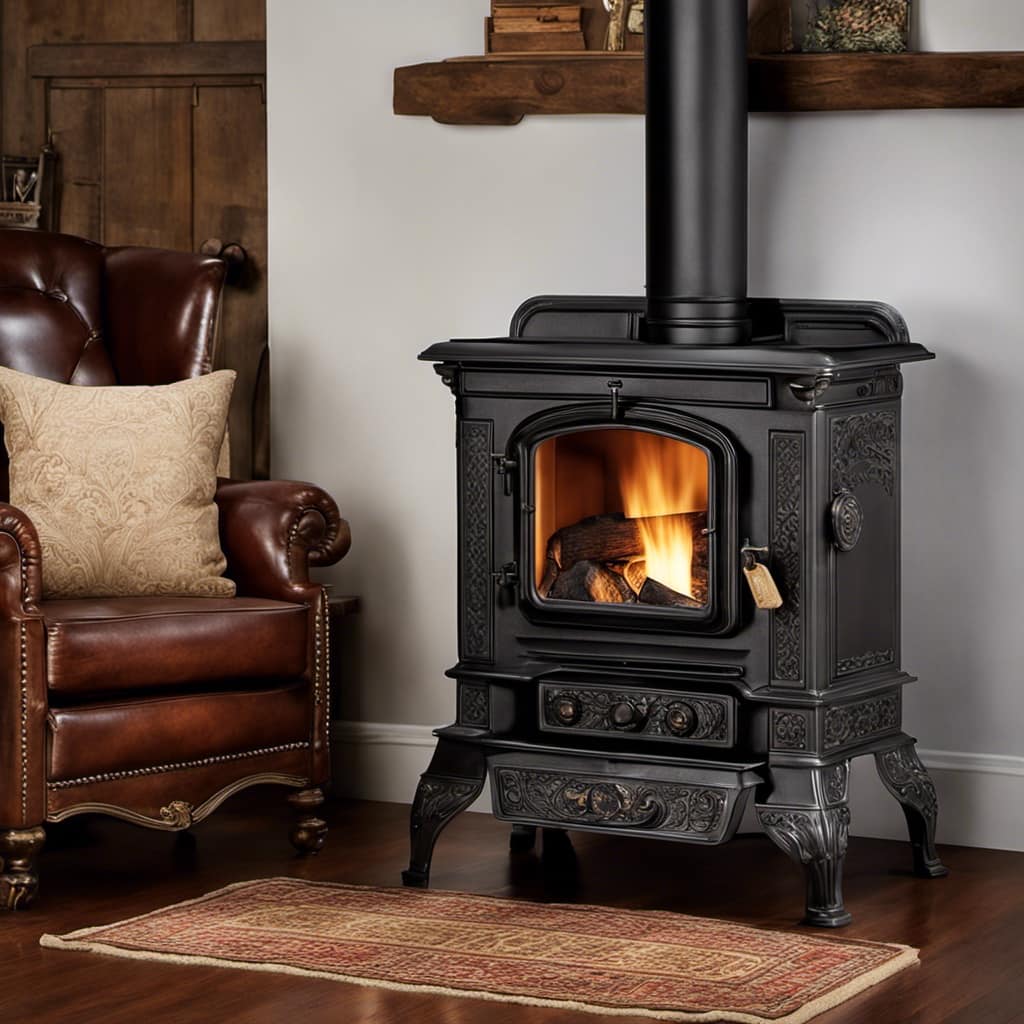
If the issue persists, it may be necessary to inspect the pipe sections for any signs of damage or deterioration.
Damaged or Deteriorating Pipe Sections
If I notice any damaged or deteriorating pipe sections, I’ll need to replace them immediately. It’s crucial to maintain the integrity of the wood stove pipe to ensure safe and efficient operation.
There are a few key signs to look out for when inspecting the pipe for damage. Firstly, rusty joints indicate corrosion and potential weakness in the pipe structure. Rust can compromise the pipe’s ability to withstand heat and may lead to leaks or even collapse.
Secondly, creosote buildup is another red flag. This sticky substance can accumulate inside the pipe, obstructing airflow and increasing the risk of chimney fires. Regular cleaning and inspection can help prevent these issues.
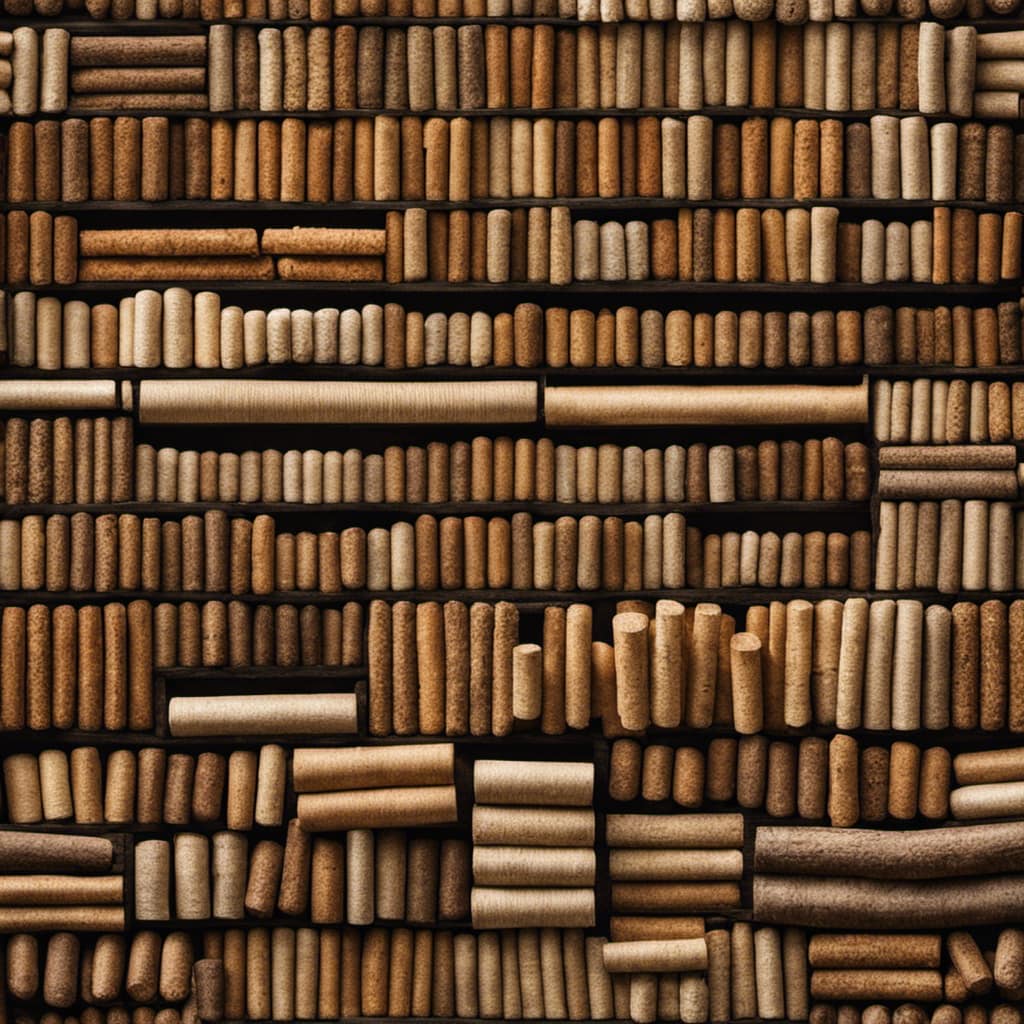
Poor Draft or Difficulty Starting Fires
Why is it that I’m experiencing poor draft or difficulty starting fires even though I’ve a functioning wood stove? Well, the answer could lie in improper installation or lack of maintenance.
Let me explain. When a wood stove is improperly installed, it can lead to a variety of issues, including poor draft. The flue pipe, which is responsible for carrying smoke and gases out of the stove, needs to be installed correctly to ensure proper airflow. Any gaps or leaks in the pipe can disrupt the draft, making it difficult to start fires and causing smoke to back up into the room.
Additionally, if a wood stove isn’t regularly cleaned and maintained, creosote buildup can occur, further obstructing airflow and affecting the stove’s performance. Therefore, it’s essential to ensure proper installation and regularly maintain your wood stove to avoid experiencing poor draft and difficulty starting fires.
Safety Hazards and Carbon Monoxide Concerns
I understand the importance of safety hazards and carbon monoxide concerns when it comes to using a wood stove. As someone who’s been using a wood stove for many years, I’ve learned the importance of regular maintenance and being aware of potential dangers.

Here are a few maintenance tips to help prevent carbon monoxide poisoning and ensure the safety of your wood stove:
- Regularly inspect the stove and flue system for any signs of damage or wear.
- Check for cracks or leaks in the stovepipe and replace it if necessary.
- Clear any debris or obstructions from the flue to ensure proper ventilation.
Install a carbon monoxide detector near your wood stove to alert you if levels become dangerous.
Is Cleaning Ash From My Wood Stove Pipe Necessary for Its Replacement?
Yes, cleaning wood stove ash often is necessary for maintaining the efficiency and safety of your wood stove pipe. Accumulated ash can restrict airflow, leading to poor combustion and increased risk of chimney fires. Regular cleaning will help extend the lifespan of your wood stove pipe and reduce the need for replacement.
Frequently Asked Questions
How Often Should I Inspect My Wood Stove Pipe for Signs of Corrosion?
I inspect my wood stove pipe for signs of corrosion regularly. It’s important to maintain the frequency of maintenance to ensure safe and efficient operation. Signs of corrosion can indicate the need for a replacement.
Can a Damaged or Deteriorating Pipe Section Be Repaired or Does It Need to Be Replaced Entirely?
If your wood stove pipe is damaged or deteriorating, it’s important to consider if it can be repaired or if it needs to be replaced entirely. Here are some maintenance tips for pipe repair.
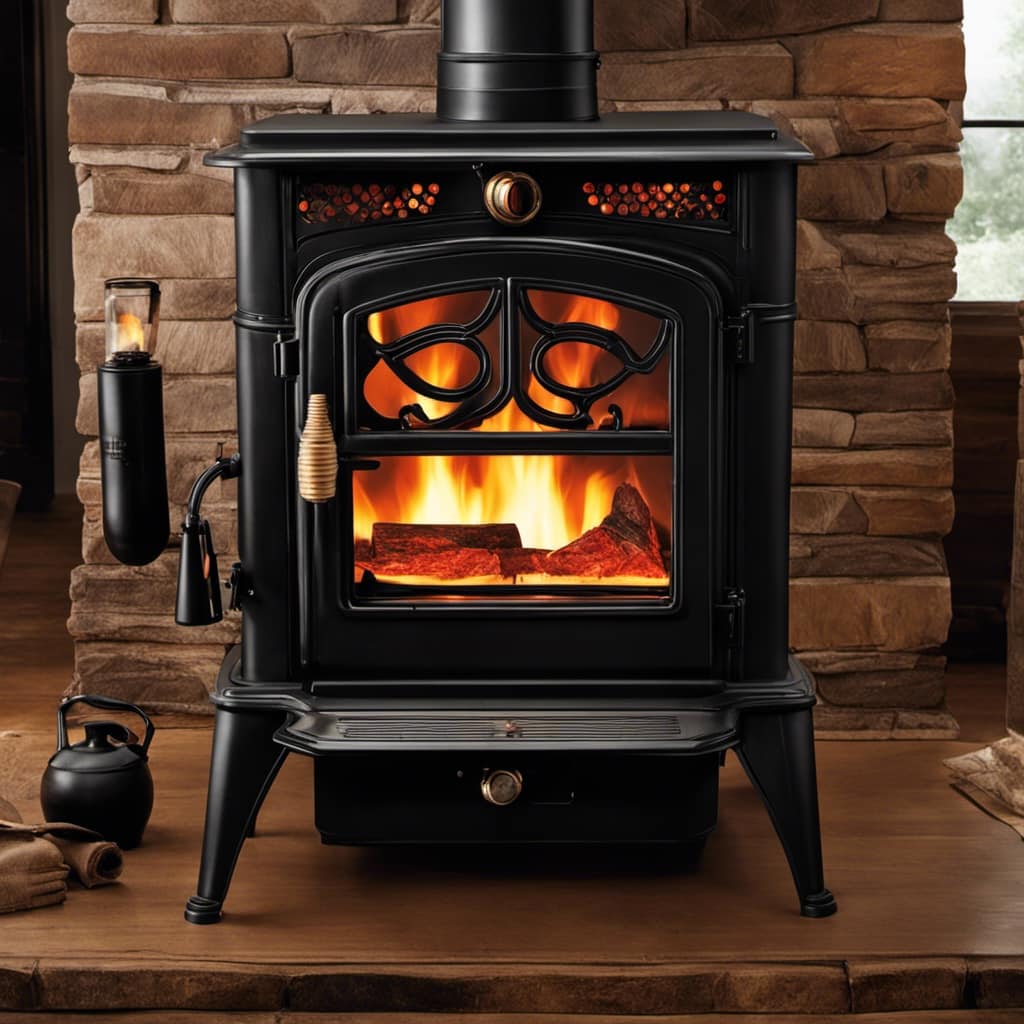
What Are Some Possible Causes for Poor Draft or Difficulty Starting Fires With a Wood Stove Pipe?
Possible causes for poor draft or difficulty starting fires with a wood stove pipe can include blockages or obstructions in the pipe and improper installation or sizing of the pipe. I’ve encountered these issues before and know how frustrating they can be.
Are There Any Additional Safety Hazards Associated With Wood Stove Pipes That I Should Be Aware Of?
Additional safety hazards associated with wood stove pipes include creosote buildup, which can lead to chimney fires, and carbon monoxide leaks. Regular maintenance, such as cleaning and inspections, is crucial to ensure the safe operation of your wood stove.
How Can I Test for Carbon Monoxide Levels in My Home to Ensure the Wood Stove Pipe Is Functioning Properly?
To test for carbon monoxide levels in my home and ensure my wood stove pipe is functioning properly, I use a carbon monoxide detector. Regular maintenance of the pipe is crucial to prevent any safety hazards.
Conclusion
In conclusion, keeping a close eye on the condition of your wood stove pipe is crucial for maintaining a safe and efficient heating system. Signs of corrosion, excessive smoke or fumes, damaged sections, and poor draft shouldn’t be taken lightly, as they could lead to safety hazards and carbon monoxide concerns.
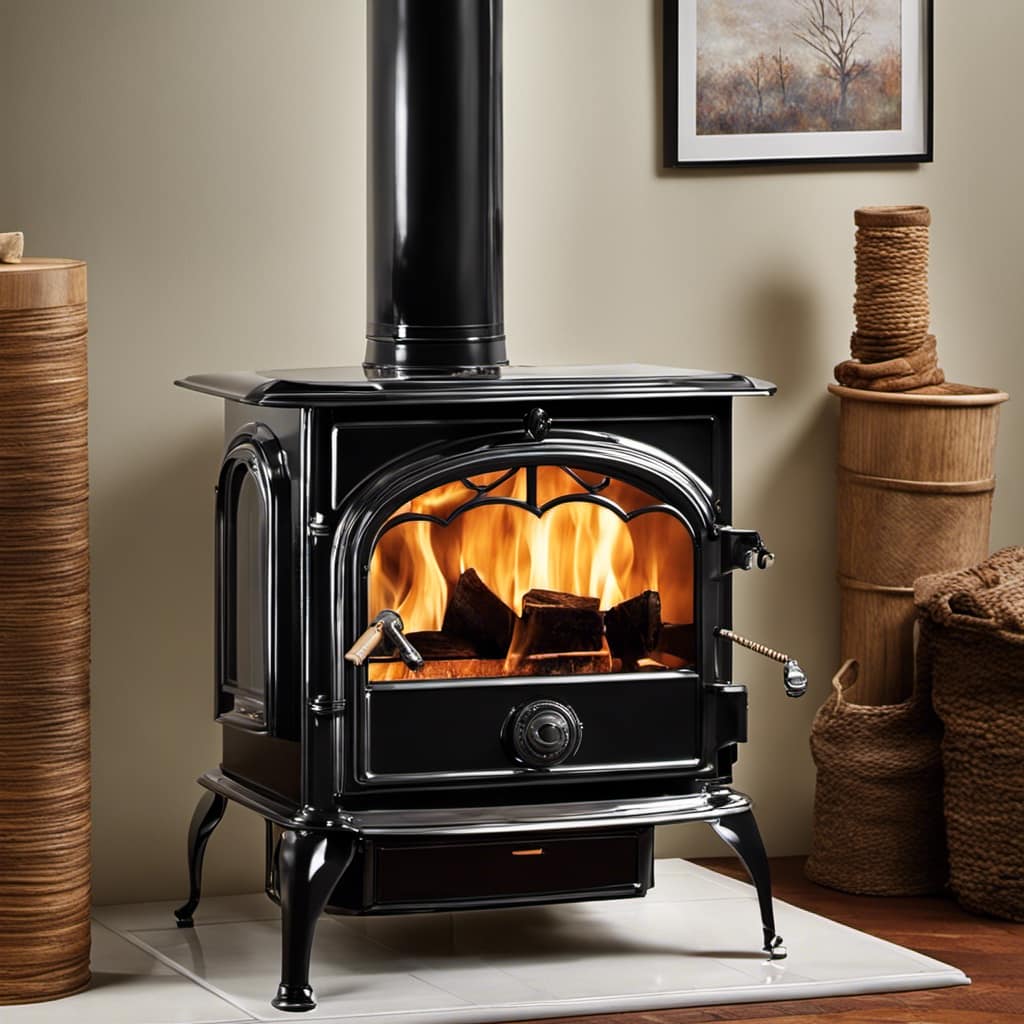
By being proactive and replacing your wood stove pipe when necessary, you can ensure a warm and secure environment for you and your family. Remember, the well-being of your home begins with a well-functioning wood stove pipe.
Growing up surrounded by the vast beauty of nature, Sierra was always drawn to the call of the wild. While others sought the comfort of the familiar, she ventured out, embracing the unpredictable and finding stories in the heartbeat of nature.
At the epicenter of every remarkable venture lies a dynamic team—a fusion of diverse talents, visions, and passions. The essence of Best Small Wood Stoves is crafted and refined by such a trio: Sierra, Logan, and Terra. Their collective expertise has transformed the platform into a leading authority on small wood stoves, radiating warmth and knowledge in equal measure.





